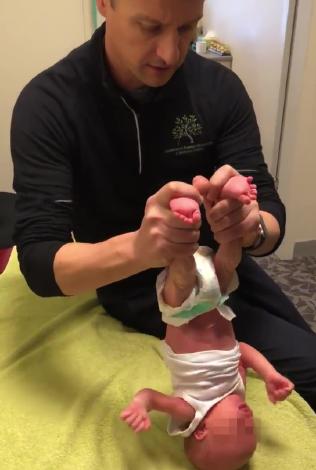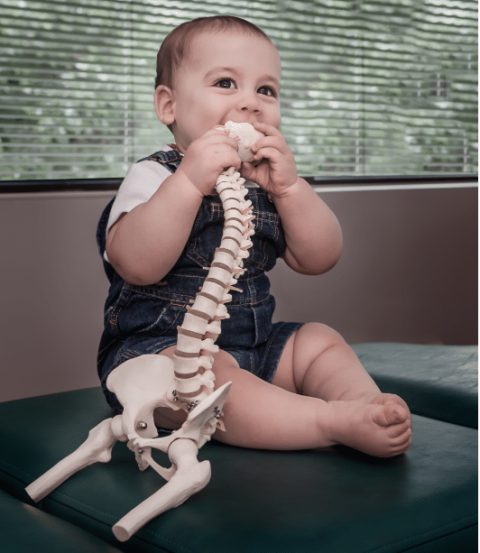It’s Thanksgiving and I’m working a 24-hour shift, so I’m feeling a bit snarkier than usual as I work on this post between admissions. But the show must go on. So please, do enjoy this satirical take on emails advertising chiropractic practice-building services to new graduates. Have I mentioned that this is satire? Happy holidays y’all.
Dear Dr. Frank Grimes, DC,
Congratulations, you’re a chiropractor!
Congratulations! You have made the exciting decision to become a chiropractor. You looked out across a saturated marketplace and said those two magic words, “Me too!” And after completing a grueling 4 year curriculum, taking all the right tests, and obtaining your license to practice, you are ready to get out there and make a name for yourself in your community.
You are probably wondering how to get started. As a recent graduate with a new business, you may not have a large marketing team at your disposal, and there is a chiropractic office on practically every corner these days fighting over a limited number of adults with a short list of complaints. That’s where we come in. Astronaut Neil Armstrong was the first human to walk on the moon. He dreamed big. Our job at SBM Consulting Services is to help you dream big, and then go out and achieve those dreams.
As a chiropractor, you have a real opportunity to change the lives of people in pain. But it is a competitive market and many practices fail. You may want to consider a few changes to maintain a healthy bottom line and to help even more people. Sometimes in order to dream big, you have to think small.
Babies are everywhere!

Babies just like this one are born almost every day!
Did you know that there are literally millions of infants out there who have never been evaluated and treated by a chiropractor? It’s true! Babies are a largely untapped potential patient pool just waiting for brave individuals like you to dive in and reap the benefits, and we are going to walk you through exactly how to do it step by step. Because if you can count on even a small percentage of the roughly 4 millions babies born every year coming to you for care, your waiting room will be just lousy with them.
But mostly it’s about helping babies reach their maximum potential, right? And if you follow our tips on how to build a successful practice harnessing the power of this demographic, you could be helping as many as 200 to 250 of them every day. And if that also happens to bring in revenue, great! As we like to say at SBM Consulting Services, “Babies aren’t just small adults, so don’t charge them less for a visit?”
Here are just a few of the practice building tips that you will have access to if you join the SBM Consulting services team at the basic entry level.
Tip #1: Make sure you have the proper credentials.

It’s a competitive market and parents these days are savvy customers, so you need to make sure that you have the right credentials and the proper training before putting yourself out there as an infant chiropractor. There are many online courses and weekend seminars you can sign up for if you just want a piece of paper to frame and hang on your wall. But we recommend taking part in the exhaustive diplomate program offered by the International Chiropractic Pediatric Association.
For only $3,000 and the completion of a rigorous curriculum, you will be able to call upon the experience of 19 courses and tens of hours of pediatric-specific training to handle anything that comes your way in clinical practice. Parents will be reassured knowing that their infant is in qualified hands and that you can answer all their questions about general health and the safety of routine immunizations. And going the extra mile when it comes to training also comes in handy when communicating complex medical information with a patient’s pediatrician or family doctor, which they wouldn’t really need but sometimes parents can be weird about it. You may even find yourself teaching the medical doctor a thing or two about the nervous system!
Tip #2: Know your limitations.
A bus driver wouldn’t try to fly an airplane, and you shouldn’t attempt to diagnose or manage problems that are out of your comfort zone as an expert in spinal health and the nervous system. But thanks to decades of hard work from lawyers and state legislative bodies, there isn’t much that falls outside of the scope of chiropractic care because everything is caused by problems with the nervous system. So just go for it! As long as you don’t molest any patients, your state’s chiropractic board has got your back. That was just a bit of humor to lighten the mood and gain your trust.
You may find that management of some problems, like meningitis or a bowel obstruction, is more trouble than it’s worth, so it might be best to avoid them. Unfortunately, most babies are healthy, but that doesn’t mean that there aren’t opportunities to make a real difference. Even the healthiest of babies tend to do things that worry their caregivers. One trick is to ask an open ended question about a baby’s health and then just validate whatever concern is raised.
Does the baby cry sometimes? Is the baby not pooping regularly or not sleeping through the night? Are the parents worried about their child’s immune system or general health? Are these concerns connected? Yes! All of these issues, and many more that are vague and non-specific, are caused by poor communication between the brain and every cell in the human body. So even if there isn’t a specific complaint to focus on, you can assure parents that regular chiropractic care is necessary to maintain a healthy baby. You don’t wait until your tooth hurts to see the dentist, so why wait until your baby’s spine collapses like an accordion to see an infant chiropractor. It just doesn’t make sense!
Tip #3: An informed parent is a satisfied parent.

A chiropractor, shown here discussing a case report on managing infantile incontinence with a 3 year trial of chiropractic adjustments.
Parents love their babies, and they want to be informed about how to make sure that they thrive in these uncertain times. They deserve the most up to date information based on the latest case reports, and we have thousands of them ready to be incorporated into your clinical practice at a moment’s notice. When explaining infant chiropractic philosophy and pathophysiology, it is helpful to avoid technical jargon and to use easy to understand language. So when you are describing how the mechanical force applied to an infant’s spine during the birth process can result in a subluxation that interferes with the flow of information from the brain to the organs, causing whatever it is that the parent is worried about, keep it simple. Just tell them that a choo choo train full of God’s healing energy is getting held up because a tree fell over the railroad tracks. If they ask for more detailed information, refer them to your website, which we will provide if you sign up for our deluxe practice building package.
Parents can be demanding, and they don’t want to see their baby harmed. They may have questions about the safety of chiropractic treatments after reading online anti-chiropractic propaganda. Chiropractic for babies is very safe, but be sure to have a frank discussion about the risks (none) and benefits (maximum potential!) with parents before initiating any treatment plan.
We recommend explaining to parents that their child likely developed spinal subluxations during birth because of the extreme amounts of force applied to the head and neck. It is important to find and correct these subluxations in order to achieve a baby’s maximum potential by reducing stress on the nervous system. We recommend only using gentle and highly specific forces applied with light fingertip pressure or with the use of an Activator. It can be helpful to compare the amount of force required to correct a subluxation with how much pressure it takes to check the ripeness of a tomato, or to compress the carotid arteries of a homeless man who has seen too much.
If a parent questions why it takes extreme force to cause subluxations but only simple light pressure or tapping to fix them, explain to them that babies are always at risk of developing subluxations, even from gentle activity such as diaper changes or a light breeze. If they again question how gentle pressure or light tapping is enough to hold a spinal segment in place, and then ask why babies aren’t always horribly ill because of recurrent and widespread subluxations involving the entire spine, refer them to your website. Remember, infant chiropractic isn’t for everyone, and you won’t have time to explain basic concepts over and over again while you are so busy helping babies.
Tip #4: Hone your physical exam and treatment skills.

An infant chiropractor demonstrating the inverted dangle maneuver.
This is truly where you can put your training in infant diagnosis and treatment on display, harnessing both the art of subluxation detection and the power of science. Science put people, like astronaut Neil Armstrong, on the moon. Just imagine what it can do for your patients. Although chiropractic technology has advanced considerably since the days of D.D. Palmer, the most sensitive subluxation detecting instrument is still the human hand, followed by the human eye, with the neurocalometer a close third. Combining all three results in a sensitivity and specificity of over 100% in the detection of hidden subluxations, with a p-value of -10.
When examining a baby, be sure to palpate the head, the entire spine, and both hips. And don’t forget to assess for any leg length discrepancies. Until the discovery of chiropractic in 1895, 70% of adults had one leg that was 6 to 12 inches shorter than the other. Holding the baby upside down is a fun and effective way to assess for hidden subluxations. Watch for any changes in the baby’s behavior. Even a slight whimper, the twitch of an arm, or some loose change falling from the diaper means that the spine is out of alignment and that the baby may take years to develop abstract reasoning skills.
Tip #5: Follow-up is key to a successful treatment plan.

Michael Phelps, shown here demonstrating the power of the human spine.
Chiropractic has been used for over a century to help celebrities and athletes achieve greatness. Parents will be excited to know that their child has a spine, just like Olympic gold medalist Michael Phelps. He couldn’t have won his Olympic medals without a spine, and no baby will achieve their maximum potential without regular chiropractic care.
Chiropractic care doesn’t end after the evaluation and correction of a spinal subluxation. Regular visits are necessary to ensure that a baby is thriving and hasn’t developed new problems. Babies are vulnerable and weak, but also amazingly resilient. Each and every baby has the potential to do great things because the human body is perfectly designed to function optimally, as long as there is no interference. As an infant chiropractor, you can find and correct the problems that arise within the body that keep the body from preventing those problems. It’s important to impress upon parents that they play an important role too. Together, you make a pretty good team.
Now get out there and start making a difference!

An adorable chiropractic patient, shown here achieving maximum potential while developing a taste for human bone marrow.
There is no time like the present to change today into a better tomorrow. You have the drive and determination. We have the tools to help you do it. So what are you waiting for?
Your friends,
SBM Consulting Services

